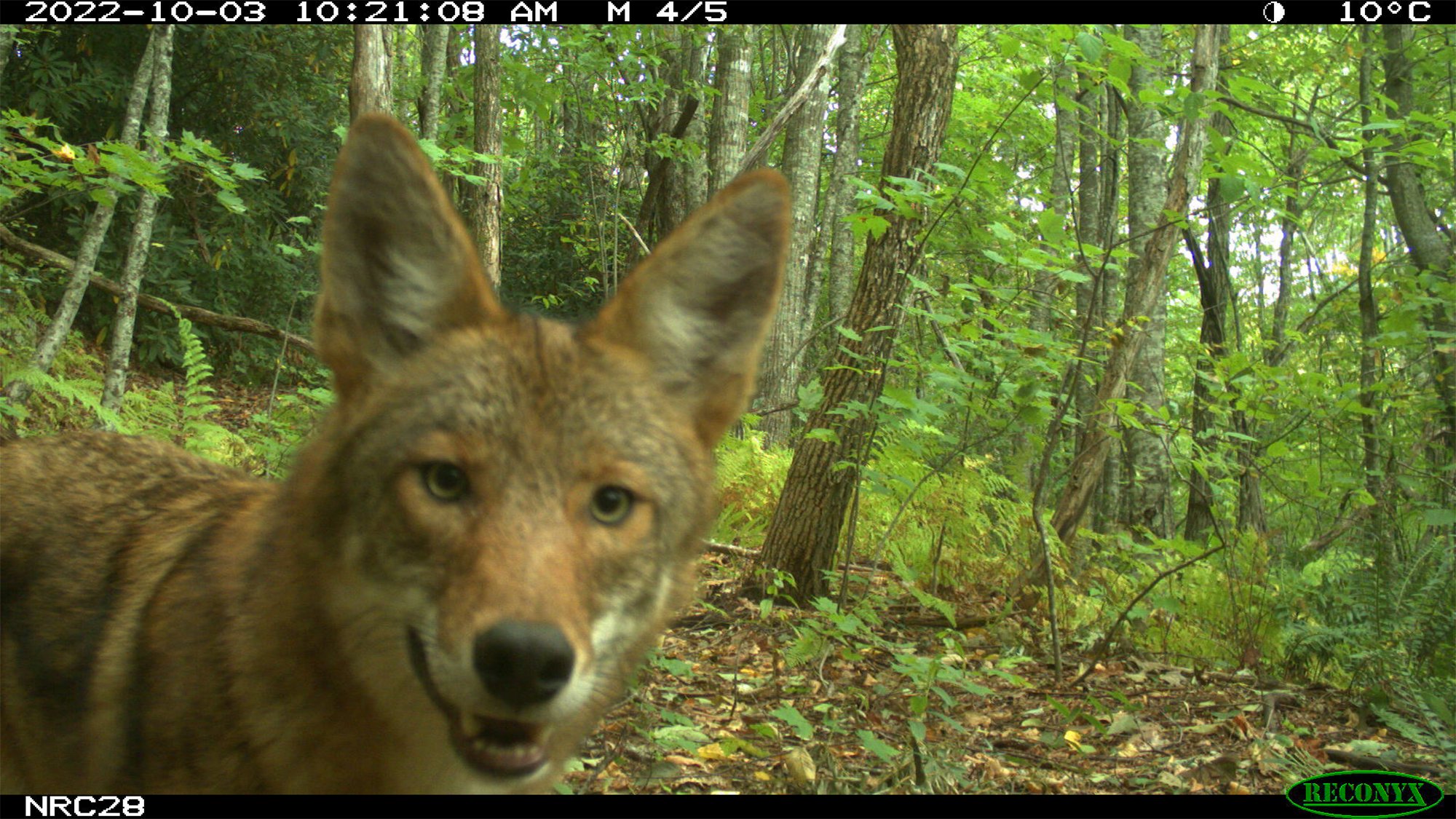

Coyotes are considered among the most successful predators in North America, with populations spread from Alaska down into Central America and east towards the Great Plains and Northeast. Even in the face of hunting, human encroachment, and competition with larger carnivores, the medium dog-sized mammals appear to be thriving. New research suggests that human hunting practices might actually be contributing to an increasing number of coyotes. The findings are detailed in a study published November 5 in the journal Ecography.
[Related: Culver City is home to a unique cat versus coyote conflict.]
Coyotes come into regular contact with humans in parks, trails, and even on city streets. This can be an issue for pet owners and farmers, since coyotes are known to go after pets and livestock including dogs, cats, chickens, goats, and sheep. The factors that influence the number of coyotes across suburban, rural, and wild landscapes have been unclear until now.
“Intensive coyote removal can obviously reduce populations in the short-term, but removal can also result in younger coyote populations with higher reproduction and immigration rates,” study co-author and University of New Hampshire wildlife ecologist Remington Moll said in a statement.
In the new study, the team started with images and video from over 4,500 cameras that were set up across the United States by the Snapshot USA project. The project collects wildlife data from a coordinated group of cameras across the contiguous US. The visual data was combined with satellite-derived habitat metrics.

The team then used several computer modeling techniques to evaluate the effects of the coyotes’ habitat type, competition with larger carnivores, hunting practices, and suburban expansion on coyote populations. Analyzing these variables gave researchers a clearer picture of how coyotes respond to a variety of environmental pressures.
“Our work suggests that promoting the recovery of large carnivores, especially in certain habitats, is more likely to reduce coyote numbers than people directly hunting them,” study co-author and North Carolina State University zoologist Roland Kays said in a statement. “With this data, we can now map them out across the country to provide the first abundance map of our country’s most important predator—an effort that could help in both conservation and coyote management.”

They also found that the presence of larger carnivores like black bears and pumas influenced coyote numbers in a habitat-dependent manner. There were fewer coyotes in forested areas inhabited by black bears. Pumas had a similar effect, but in more open environments. Grasslands and agricultural areas had the highest levels of coyote abundance and both of these regions provide them with prey and shelter. The impact of urbanization on coyote populations varied. At smaller, local scales, urban development tended to reduce coyote numbers. This is largely due to their habitats being broken up and increased human presence. At a larger, suburban scale, coyote populations thrived. They appear to instead benefit from the fragmented habitats and edges that give them access to natural and human-modified resources.
The study also showed some significant regional variation in coyote populations. There were particularly high numbers in the southwestern US and lower populations in the northeast. The team believes that this reflects the diverse ecological and geographical factors at play in these regions.
[Related: Eastern coyotes are increasingly common—here are 5 facts to know about them.]
“In our study, we detected more coyotes in places where hunting was allowed,” said Moll. “This trend occurred over several years, suggesting that, on average, hunting did not reduce coyote abundance and perhaps increased it locally in certain areas.”

Some other smaller species are also seeing both increased populations and rebounds despite human encroachment. Slimy slugs and snails are thriving in Los Angeles, California and appear to prefer urban life. In parts of Brazil, scorpions are thriving due to increased urbanization and warming temperatures. The arachnids have become the lethal poisonous animal in Brazil and has increased the demand for antivenom. Additionally, honeybees in Ethiopia have made a slow recovery following a two year war.
Nature is finding a way.
